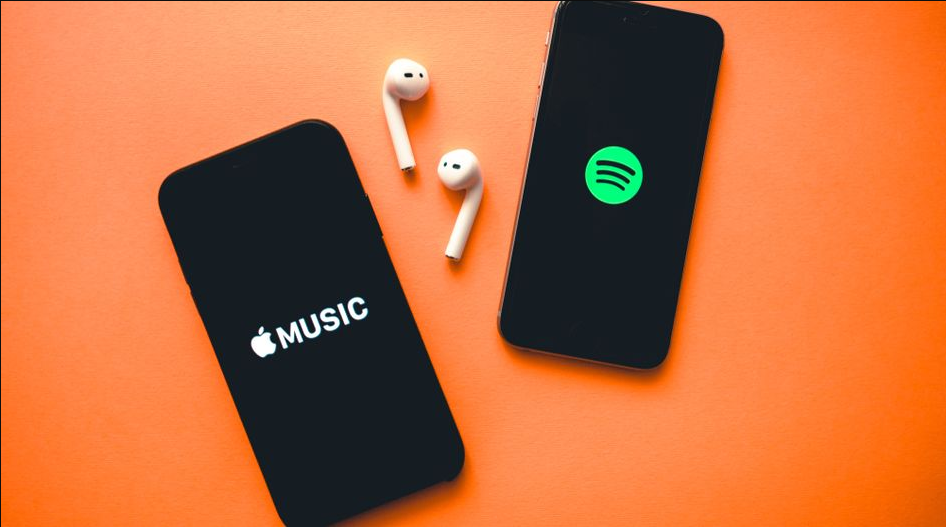Welcome to a world where music isn’t just background noise—music in marketing is the secret sauce that can make your brand stand out! Music integration in marketing is all about using catchy tunes to capture attention, stir emotions, and leave a lasting impression on your audience.
Whether you’re a small business or a global corporation, understanding the power of music can supercharge your marketing efforts. In this article, we’ll explore why music matters in marketing, how to choose the perfect soundtrack for your brand, and practical tips for seamlessly integrating music into your campaigns.
Get ready to tap your feet, because we’re about to dive into the rhythmic world of music!
Table of Contents
The Power of Music in Marketing
Music isn’t just background noise in marketing; it’s a powerful tool that can work wonders for your brand. Let’s explore why music matters so much in marketing campaigns.
Music in marketing has the incredible ability to evoke emotions. Have you ever heard a song that instantly made you feel happy, nostalgic, or even pumped up? That’s the magic of music! When you pair the right tune with your marketing message, you can tap into your audience’s emotions and create a memorable connection.
It has a unique way of triggering memories. Think about the songs that were popular during your high school years or your favorite childhood tunes. Hearing those songs can instantly transport you back in time, bringing back memories and feelings associated with those moments. By incorporating familiar or nostalgic music in marketing, you can leverage this powerful psychological phenomenon to create a sense of familiarity and comfort with your brand.

Music in Marketing and Brand Image
Music in marketing also has the ability to influence consumer behavior. Have you ever found yourself tapping your foot along to a catchy jingle or humming a tune from a commercial? That’s no coincidence! Studies have shown that music can affect our perception of products and brands, influencing our purchasing decisions without us even realizing it.
By carefully selecting the right music for your marketing campaigns, you can subtly guide your audience towards taking the desired action, whether it’s making a purchase, signing up for a newsletter, or sharing your content with their friends.
Music can help your brand stand out in a crowded marketplace. With so many advertisements bombarding consumers every day, it’s crucial to find ways to capture their attention and make a lasting impression. A well-chosen piece of music in marketing can help your ad cut through the noise and grab the audience’s attention, making them more likely to remember your brand and message.
Lastly, it has the power to unify people and build communities. Just think about the way people bond over their favorite bands or the shared experience of attending a concert. By incorporating music into your marketing campaigns, you can create a sense of belonging and connection among your audience, fostering loyalty and engagement with your brand.
Successful Marketing Campaigns
Let’s take a look at some real-life examples of how brands who have used music in marketing and rocked their campaigns.
One standout example is Coca-Cola’s Share a Coke campaign. Instead of simply promoting their product, Coca-Cola personalized their bottles by printing people’s names on them. To make the campaign even more memorable, they created catchy jingles with names incorporated into the lyrics.
This not only encouraged consumers to purchase Coke bottles with their names on them but also sparked social media sharing as people posted photos of their personalized bottles online.
Another memorable campaign was Apple’s launch of the iPod. Apple didn’t just advertise their product – they created an iconic image with their silhouette commercials. These ads featured people dancing to popular songs while wearing white iPod earbuds. By pairing their sleek product with energetic music and vibrant visuals, Apple captured the attention of consumers and positioned the iPod as a must-have accessory for music lovers everywhere.
Red Bull is also known for its innovative marketing campaigns, and music plays a central role in many of them. One notable example is the Red Bull Music Academy, which hosts workshops, festivals, and events around the world. By associating their brand with music discovery and innovation, Red Bull has cultivated a loyal following among music enthusiasts and positioned themselves as a key player in the music industry.
These examples demonstrate the power of music in marketing campaigns and create memorable experiences for consumers. Whether it’s through personalized jingles, iconic imagery, or immersive events, brands can leverage music to connect with their audience on a deeper level and leave a lasting impression.
Choosing the Right Music for Your Brand
Choosing the perfect music in marketing for your brand is like picking the right outfit for a party – it should reflect who you are and make you stand out in the crowd. Here are some tips to help you find the right tunes for your brand:
Firstly, get to know your audience. What kind of music do they like? Are they into pop, rock, hip-hop, or something entirely else? By understanding your audience’s musical preferences, you can select music that resonates with them and makes them feel connected to your brand.
Next, think about your brand’s personality. Are you fun and energetic, sophisticated and classy, or laid-back and chill? Choose music that matches the vibe you want to convey and reinforces your brand identity. For example, if you’re a trendy fashion brand targeting young millennials, you might opt for upbeat pop or indie tunes to reflect your brand’s youthful energy.
Consider the context in which your music will be used. Are you creating a commercial for TV, a social media ad, or a video for your website? Different platforms and mediums require different types of music, so choose music that fits the tone and format of your content.
Don’t forget about licensing and copyright laws. Make sure you have the necessary permissions to use the music in your marketing materials to avoid legal issues down the road. You can either license music from a reputable provider or use royalty-free music that is free to use for commercial purposes.
Lastly, test and iterate. Don’t be afraid to experiment with different types of music and see what resonates best with your audience. Monitor the performance of your marketing campaigns and adjust your music choices accordingly to maximize engagement and impact.
Tips for Integrating Music in Marketing
Integrating music into your marketing can give your brand a catchy tune that sticks in people’s heads. Here are five tips to help you make the most of music in your marketing campaigns:
Create a Cohesive Brand Soundtrack
When people hear a certain song, they might think of your brand. Choose a signature tune or sound that reflects your brand’s personality and values. Whether it’s a catchy jingle, a specific genre, or a unique sound effect, consistency is key. Use this brand soundtrack across all your marketing materials to reinforce your brand identity and create a memorable sonic signature.
Leverage UGC and Challenges
Get your audience involved by encouraging them to create and share content featuring your brand’s music. Whether it’s a dance challenge on TikTok, a lip-sync contest on Instagram, or a karaoke competition on YouTube, user-generated content can help amplify your brand’s message and reach new audiences. Be sure to provide clear instructions and incentives to encourage participation and make it easy for people to share their creations.
Use Storytelling and Narratives
Music can add depth and emotion to your brand’s storytelling efforts. Use music to set the mood, convey emotions, and enhance the narrative of your marketing content. Whether it’s a heartfelt ballad in a video about your brand’s philanthropic efforts or an adrenaline-pumping track in a product launch teaser, music can help captivate your audience and keep them engaged from start to finish.
Incorporate into Ads and Social Media Posts
Don’t underestimate the power of music in your advertising and social media posts. Use music to grab people’s attention, evoke emotions, and drive action. Whether it’s a catchy jingle in a TV commercial, a curated playlist on your brand’s social media channels, or a soundbite in a sponsored post, music can help your brand stand out in a crowded digital landscape and make a lasting impression on your audience.
Engage with your Audience
Finally, don’t forget to engage with your audience and listen to their feedback. Pay attention to how people respond to your brand’s music and be open to adjusting your approach based on their preferences. Encourage conversation and interaction around your brand’s music by asking questions, running polls, and soliciting user-generated content. By actively engaging with your audience, you can build a stronger connection and foster brand loyalty over time.
Challenges and Pitfalls to Avoid for Music in Marketing
Incorporating music into your marketing strategy can be highly effective, but it’s important to navigate potential challenges and pitfalls along the way. One common issue is the temptation to overuse music. While music can be a powerful tool, excessive use can overwhelm your audience and dilute its impact. It’s crucial to strike a balance and use music strategically to enhance rather than overshadow your marketing message.
Cultural sensitivity is another critical consideration when using music in marketing. Different cultures have distinct musical preferences and sensitivities, so it’s essential to be mindful of this diversity and avoid using music that could be offensive or inappropriate to certain groups of people. By respecting cultural nuances, you can ensure that your marketing efforts resonate positively with your target audience.
Copyright issues pose a significant risk for brands using music in marketing materials. Using copyrighted music without permission can result in legal consequences, including hefty fines and lawsuits. To avoid copyright infringement, make sure to obtain the necessary licenses or permissions for the music you use in your marketing campaigns.
Originality is key to making a lasting impression with your brand’s music. Using generic or overused music runs the risk of making your brand appear uninspired and forgettable. Instead, strive for creativity and authenticity in your music choices to captivate your audience’s attention and differentiate your brand from competitors.
Lastly, it’s essential not to ignore feedback from your audience. Pay attention to how people respond to your brand’s music and be open to making adjustments based on their preferences and feedback. By actively engaging with your audience and listening to their input, you can ensure that your brand’s music resonates positively and enhances your overall marketing efforts.
Legal and Licensing Considerations
When it comes to using music in marketing, it’s crucial to follow the rules to avoid legal troubles. Copyright laws protect the rights of musicians and composers, so using their music without permission is a big no-no. To stay on the right side of the law, make sure you have the proper licenses or permissions for the music you use in your marketing materials.
There are different types of licenses, depending on how you plan to use the music. For example, if you’re creating a commercial or promotional video, you’ll need a synchronization license. If you’re using music in a public setting like a store or event, you may need a public performance license. It’s important to do your homework and ensure you have the appropriate licenses for your specific use case.
Fortunately, there are resources available to help you navigate the world of music licensing. Websites like the American Society of Composers, Authors, and Publishers (ASCAP) and Broadcast Music, Inc. (BMI) offer licenses for a wide range of musical works. Additionally, there are platforms where you can find royalty-free music that’s free to use for commercial purposes, saving you the hassle of obtaining individual licenses.
The Soundtrack of Music in Marketing
Music can be a powerful tool in your marketing arsenal, helping your brand stand out, connect with your audience, and leave a lasting impression. By choosing the right music, leveraging user-generated content, storytelling, and ensuring legal compliance, you can harness the full potential of music to elevate your marketing campaigns.
Remember to stay creative, culturally sensitive, and responsive to feedback from your audience when using music in marketing. With the right approach, music can be more than just background noise – it can be the driving force behind your brand’s success in the noisy world of marketing. So turn up the volume and let your brand’s unique sound be heard!
Which brand has used music perfectly in their marketing that you remember? Talk to us in the comments below!



















